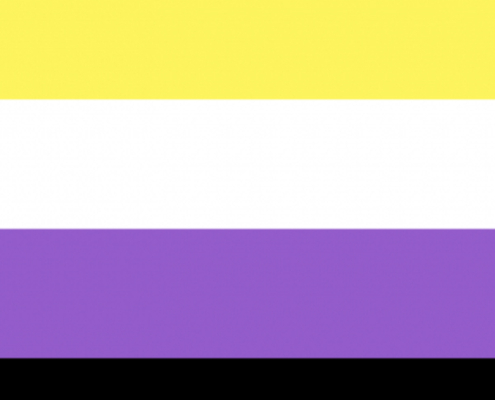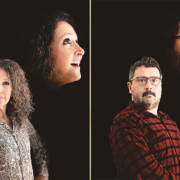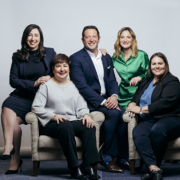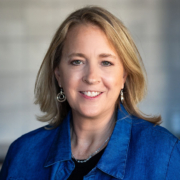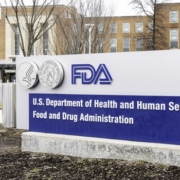Breaking the binaries
Breaking the binaries
By Stephanie Hoeler and Karina Salinas
Imagine that you’re visiting your doctor’s office for an annual checkup – your doctor that you’ve been seeing for years. You wave hello to the receptionist, who’s been there forever and knows everyone, and she smiles back and tells you the doc will see you in a few minutes, but she calls you by the wrong name. Maybe you don’t think too much about it, just a mistake, and then the nurse calls you into the examination room, again with the wrong name. You tell him no, that’s not my name, and he gives you a little half-smile, like a parent might with a child too young to understand, and goes right on referring to you by the wrong name as he takes your vitals. Then the doc herself comes in, and she refers to you by the wrong name. You say, again, that’s not my name, and she gives you that same little half-smile and goes right on doing it.
Doctor-patient interactions are about as vulnerable and uncomfortable as it gets for most of us. We tell doctors things we’d never tell our parents or children or significant others. Think a doctor referring to you by the wrong name, over and over again, might make you a little more uncomfortable? Or a lot?
And yet this, and more, happens all the time to transgender and nonbinary patients. You sit down in the waiting room, maybe at a specialist who traditionally handles matters for the sex you were assigned at birth, you don’t look like the other patients, someone calls your name, maybe it’s the name you go by, maybe it isn’t, maybe the pronouns are right, maybe they aren’t. With each interaction, the receptionist, the nurse, the physician, maybe even the other patients, you’re having to repeat yourself and reiterate your pronouns and name? And have the same uncomfortable conversations over and over. If a doctor’s office is supposed to be a place of comfort and trust, well, this scenario wouldn’t inspire much of either.
Going beyond discomfort, imagine for a moment someone assigned female at birth but who now identifies and presents as a man. That person faces the same risk of breast cancer as I or any other cis woman does. What might the experience of a mammogram be like for them, when every step in the journey, from bedside manner to the posters on the wall and the language in the literature the patient is handed before and after, was and is designed and directed towards a gender identity that the person is not? Is that a formula for positive health outcomes? And if it isn’t, which it obviously isn’t, don’t we as healthcare communicators have a responsibility to use our powers to change it?
I can already feel some readers recoiling a bit. This again? Do we really have to change the whole way we think about gender and language for sake of the small number of people to whom such distinctions might apply?
That’s a fair question. My answer is this. Every day we in the healthcare communications world develop materials that target rare disease patients and their caregivers. Some of those rare disease patient populations number in the tens of thousands, thousands, or even hundreds. But all of us take the creative and language choices we make for rare disease brands just as seriously as we would take them for brands with larger patient populations. A few hundred or a few million, our responsibility to the patient on the other end of the communication is exactly the same. Given that, is a trans man with a breast lump, or a trans woman with a prostate issue, worth any less consideration? There are 1.5 million-plus transgender adults living in the United States right now, and that number will rise. We as healthcare communicators must transform the way we talk about, and think about, and create, for this population. It is our responsibility to help people feel comfortable with their own care.
To do that, we must tell more stories, and we must make those stories feel familiar and comfortable to trans and nonbinary patients, just as we must tell stories that feel familiar and comfortable to patients of different ages and ethnicities and socioeconomic backgrounds and geographic areas. And to do that, we must learn what those stories ought to look and sound like. Here at TBWA\WorldHealth, we’re developing a curriculum to expand our understanding of gender identity and how it will improve our work. That curriculum goes far beyond pronouns; we’re exploring the intersectionalities of gender and other social determinants of health, and what they mean to the stories we have to tell. If you’re gender-nonconforming, for example, you’re more likely to be struggling with employment, more likely to be struggling with insurance because in America it’s tied to employment, more likely to have less options for care, and on and on, and all that must play into the tone and tenor of communications with you, and with any HCPs that might be seeing you.
So we as healthcare communicators must learn to meet all patients where they are, and meet their HCPs where they are, too, since those HCPs need to be educated no less than the rest of us do. What are the right physical depictions? What is and isn’t a stereotype? What are the right words? What are the parts of the care continuum that seem benign to the rest of us but might make a trans patient feel that this wasn’t designed with their needs in mind?
The good news is that we’ve all done this before. We are in the business of telling new stories, of seeking out new communities of patients and speaking to them in a voice they understand to help improve and save lives. That’s always our goal, in every form of healthcare communications. Every time pharma comes up with a new breakthrough, we find a way to tell the story of that breakthrough and of all the people it might help, of fitting the message to the recipients, whether the recipients are 400 or 400 million. Every time, we get better at teasing out the beautiful diversities among those 400 or 400 million and framing our messages to those beautiful diversities. Every time, we expand the language of health and the library of patient stories. This is just another chapter.
Stephanie Hoeler is senior VP, experience strategy and Karina Salinas is diversity equity inclusion manager for TBWA\WildType.

